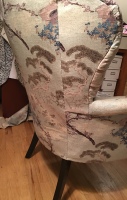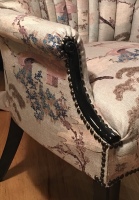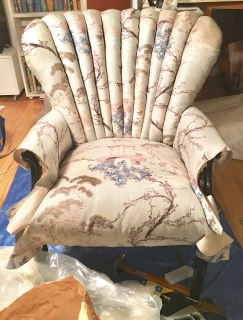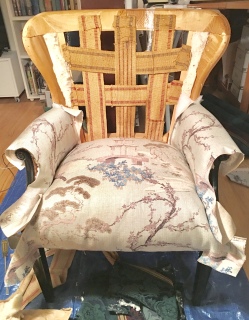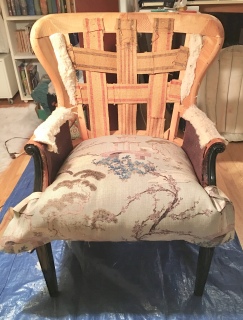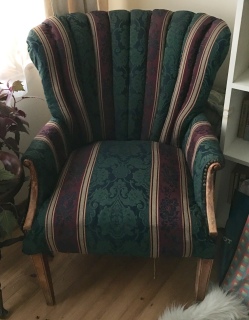The chair is finished!
I spent the day - off and on - hammering in nails. I think I started a few days ago. Time is passing too quickly!
The tip from the seller to use needle-nosed pliers to hold the nail while hammering it in was incredibly helpful. I bent far fewer of them and didn't smash any of my fingers. More than once, anyway. The nails were also a little too textured and matte, so I used my dremel to buff them, and now they have a nice worn, shiny look to them.
The nails aren't evenly spaced, but I used the original holes, so they must have been uneven on the original. It's not my fault!
Some things I'd change if I were more of a masochist: figure out some way to upholster the wings so they aren't wrinkly, and make the fold in the side fronts face the back instead of the front.
I do like the way I managed to pleat the deck cushion at the corners.
And having instructions on how to insert pligrip was so helpful! The curved back section of the wings came out very neat and smooth. The non-stuffed part, that is.
Anyway, here are some more pictures:


